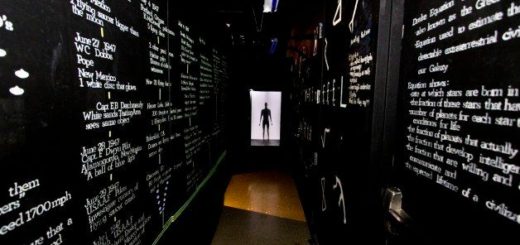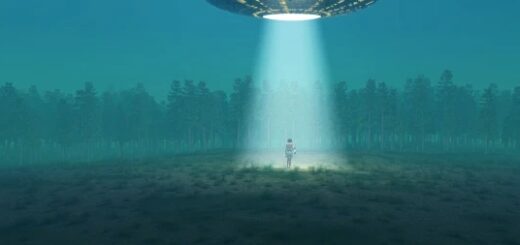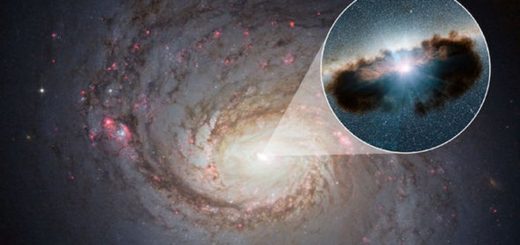Mystery Of Planet V – Was There Once A 5th Planet Between Mars And The Asteroid Belt?

Kevin Montana – The Planet V hypothesis is based on the assumption that there was once a 5th planet in our Solar System. The planet has been named Planet V and some astronomers think it may have once existed between Mars and the asteroid belt.
If there was a fifth planet that formed during the early planetary era, then what happened to it?
The existence of a hypothetical fifth planet once existed in our solar system was put forward by NASA scientists John Chambers and Jack J. Lissauer in 2002.
Chambers and Lissauer conducted several computer simulations of the Solar System with an additional terrestrial planet and suggested Planet V was either was ejected or impacted the Sun, an event that led to its destruction about 4 billion years ago. According to researchers a destructive cosmic event like this one was realistic if Planet V’s mass was less than 0.25 of Mars. The other simulations were not considered successful because Planet V either survived for the entire 1 billion year length of the simulations, or collisions occurred between planets.
About 4.1 to 3.8 billion years ago, our Solar System experienced a period of intense comet and asteroid bombardment. Known as the Late Heavy Bombardement, it is believed it was during this period that a large number of asteroids collided with the early terrestrial planets in the inner Solar System, including Mercury, Venus, Earth.
The record of this event is all but lost on the Earth because our planet’s tectonic plate system and active erosion ensure that the surface is constantly renewed, but on the Moon and other celestial objects in our Solar System there are numerous craters that speak in favor of the Late Heavy Bombardment theory.
Scientists Chambers and Lissauer think Planet V disappeared during this cosmic cataclysm in our Solar System and most likely ended up crashing into the Sun.
The Disruption Theory suggests there was once a hypothetical planet Phaeton between Mars and Jupiter. Planet Phaeton’s destruction resulted in the creation of the asteroid belt.
Phaethon, the son of the sun god Helios in Greek mythology, who attempted to drive his father’s solar chariot for a day with disastrous results and was ultimately destroyed by Zeus has been a subject debated for years among astronomers. It was astronomer Heinrich Wilhelm Matthäus Olbers, who in 1802 formulated the planet Phaeton hypothesis.
According to the Phaeton hypothesis the alleged planet was destroyed because it came too close to Jupiter and was torn apart by its powerful gravity or maybe it was struck by another large celestial body. There is also a possibility that Planet Phaeton disappeared because it was shattered by some internal catastrophe, or it was destroyed by a hypothetical brown dwarf, the companion star to the Sun, known as Nemesis. Whether Planet Phaeton ever existed has never been determined.
See also:
What Is The Kármán Line?
Quasars: Most Energetic, Distant And Extremely Luminous Astronomical Objects
Why Are Green Galaxies So Rare?
More Cool Science Facts
More About Astronomy
Most modern astronomers reject the Phaeton hypothesis and many scientists think the asteroid belt consists of remnants of the protoplanetary disk. About 4.6 billion years ago, when our solar system was being formed, a tenth planet tried to form between Mars and Jupiter.
The planet could not form because of Jupiter’s very strong s gravitational forces and the asteroids we today observe in the belt, are remains of the failed planet. Even if the planet had formed, it would have been rather insignificant. If we put all the asteroids in the solar system together into one body, they would form an object less than half the size of our Moon!
Some people confuse Planet V with Planet Phaeton. These are two entirely different hypothetical planets and it has never been suggested that Planet V was not responsible for the creation of the asteroid belt.
There is also a theory that suggest Planet V was destroyed due to an impact onto Mars. Some scientists have proposed this impact formed the Borealis Basin in the northern hemisphere of Mars that covers 40% of the planet.
Written by Kevin Montana MessageToEagle.com Staff Writer
Copyright n



 Creators of mankind
Creators of mankind Description of “Tall white aliens”
Description of “Tall white aliens” Where they came from?
Where they came from? About hostile civilizations
About hostile civilizations The war for the Earth
The war for the Earth “Tall white aliens” about eternal life
“Tall white aliens” about eternal life Video: “Nordic aliens”
Video: “Nordic aliens” Aliens
Aliens Alien encounters
Alien encounters The aliens base
The aliens base UFO
UFO Technology UFO
Technology UFO Underground civilization
Underground civilization Ancient alien artifacts
Ancient alien artifacts Military and UFO
Military and UFO Mysteries and hypotheses
Mysteries and hypotheses Scientific facts
Scientific facts


















